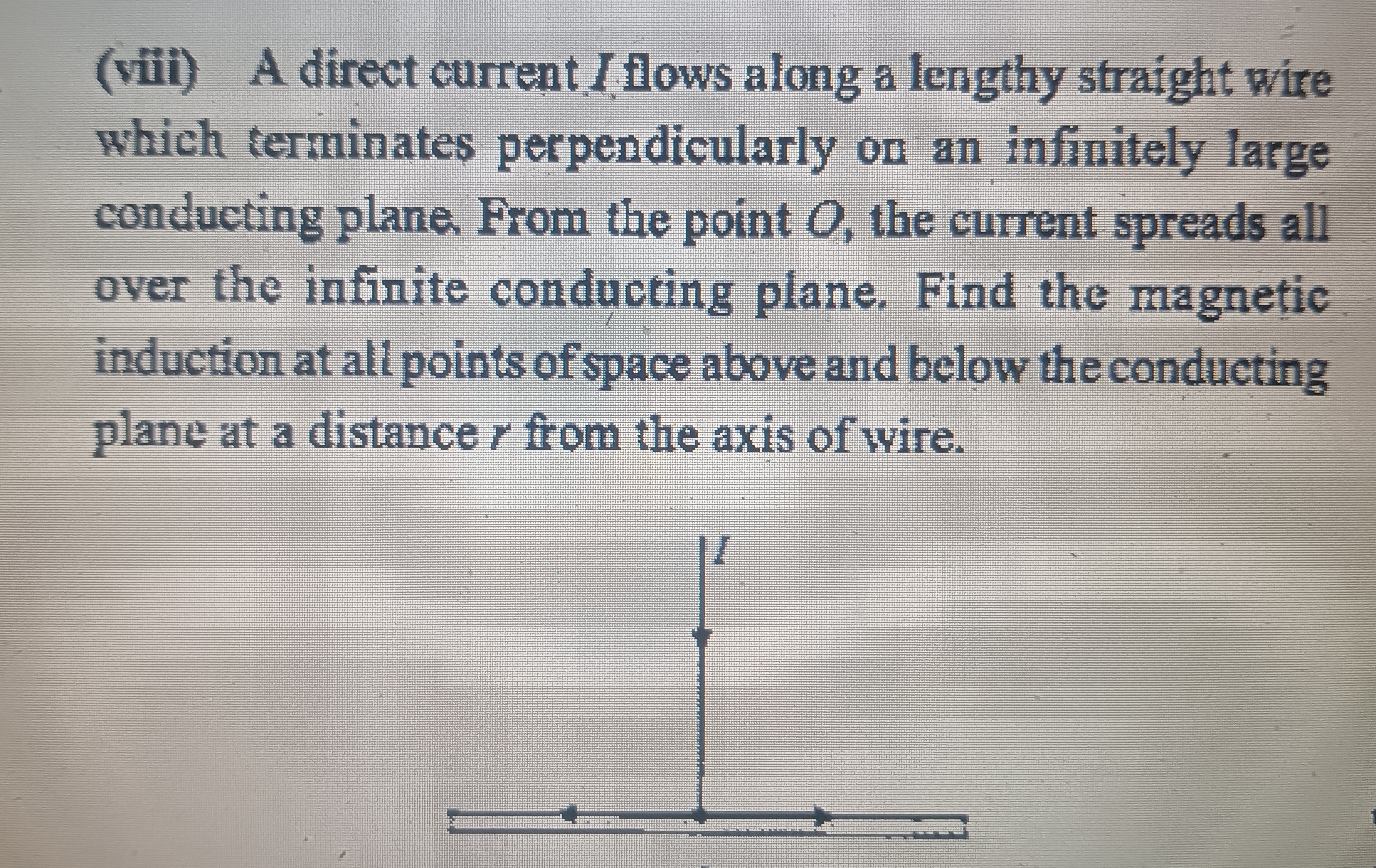Question
Question: A direct current $I$ flows along a lengthy straight wire which terminates perpendicularly on an infi...
A direct current I flows along a lengthy straight wire which terminates perpendicularly on an infinitely large conducting plane. From the point O, the current spreads all over the infinite conducting plane. Find the magnetic induction at all points of space above and below the conducting plane at a distance r from the axis of wire.

Above the plane: 0; Below the plane: πrμ0I in the azimuthal direction.
Above the plane: 2πrμ0I; Below the plane: πrμ0I in the azimuthal direction.
Above the plane: 0; Below the plane: 2πrμ0I in the azimuthal direction.
Above the plane: 2πrμ0I; Below the plane: 0.
Above the plane: 0; Below the plane: πrμ0I in the azimuthal direction.
Solution
The problem can be solved using the method of images. The conducting plane imposes a boundary condition that the tangential component of the magnetic field must be zero.
1. Magnetic Induction Above the Conducting Plane (z>0) For the region above the conducting plane, we can replace the conducting plane and the current distribution on it with an image wire. If the real wire carries current I downwards, the image wire is placed at the same location but carries an equal and opposite current I upwards. The magnetic field at a distance r from the axis of the wire is the sum of the magnetic fields produced by the real wire and the image wire. The magnetic field due to the real wire (current I downwards) at a distance r is Breal=2πrμ0Iθ^ (azimuthal direction). The magnetic field due to the image wire (current I upwards) at a distance r is Bimage=2πrμ0I(−θ^). The total magnetic induction above the plane is the sum: Babove=Breal+Bimage=2πrμ0Iθ^−2πrμ0Iθ^=0.
2. Magnetic Induction Below the Conducting Plane (z<0) For the region below the conducting plane, the real wire carries current I downwards and terminates at the plane, where it spreads radially outwards. The magnetic field produced by these radial currents on the plane must be considered. The magnetic field from the real wire alone at z<0 is Bwire=2πrμ0Iθ^. The induced currents on the plane flow radially outwards. The magnetic field produced by these induced currents at a distance r from the axis and below the plane is Binduced=2πrμ0Iθ^. The total magnetic induction below the plane is the sum of the field from the wire and the field from the induced currents: Bbelow=Bwire+Binduced=2πrμ0Iθ^+2πrμ0Iθ^=πrμ0Iθ^. This field is tangential to the plane and is in the azimuthal direction.
Summary:
- Above the conducting plane (z>0): The magnetic induction is 0.
- Below the conducting plane (z<0): The magnetic induction is πrμ0I, directed azimuthally.
